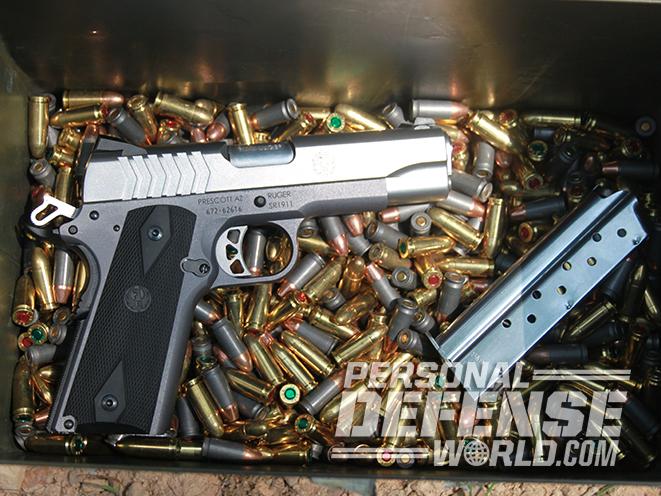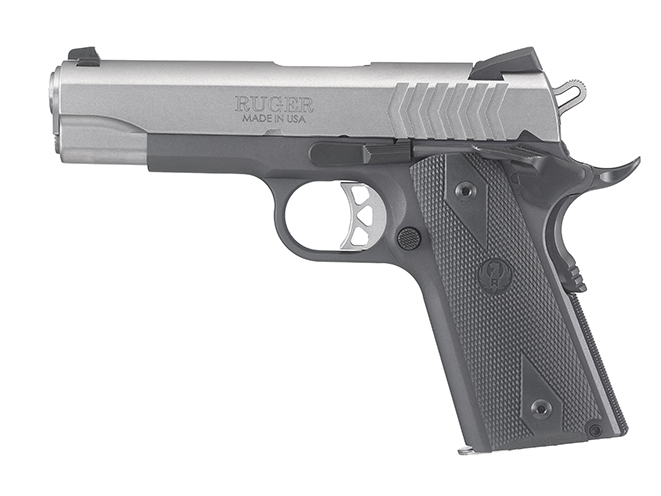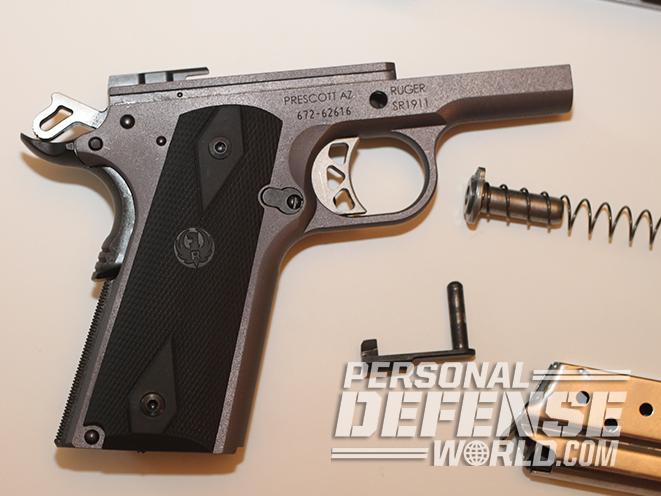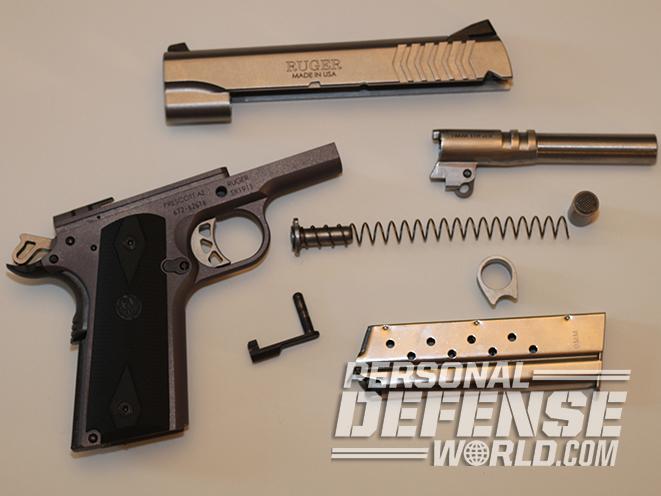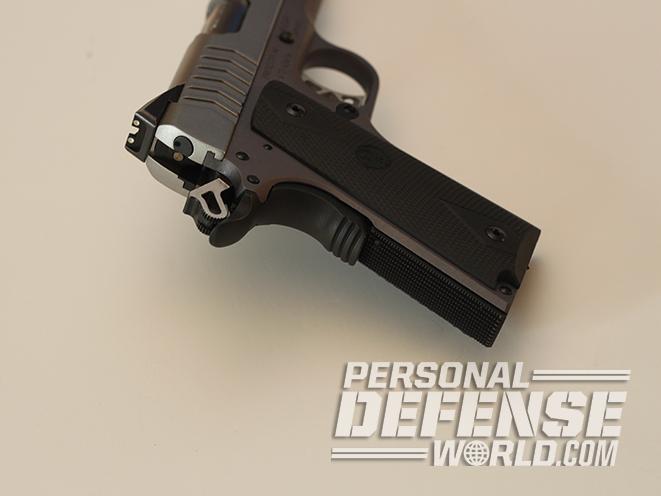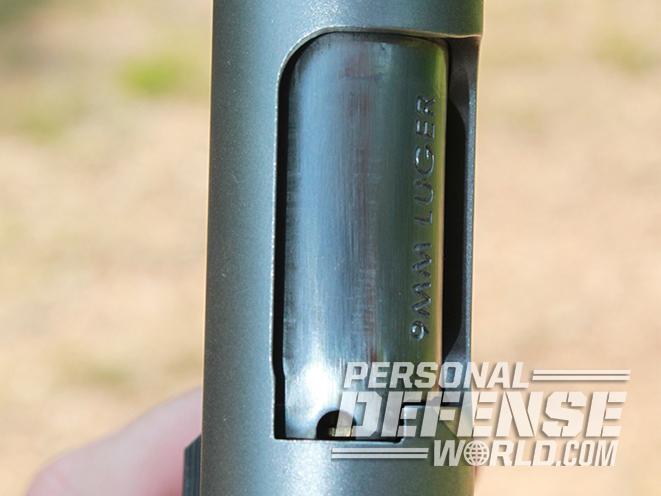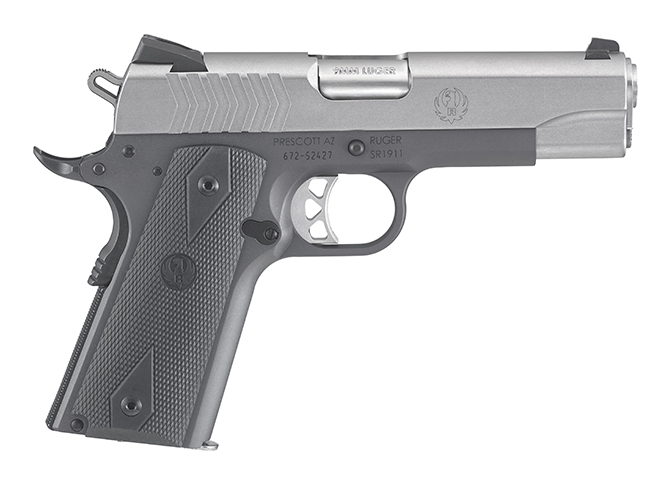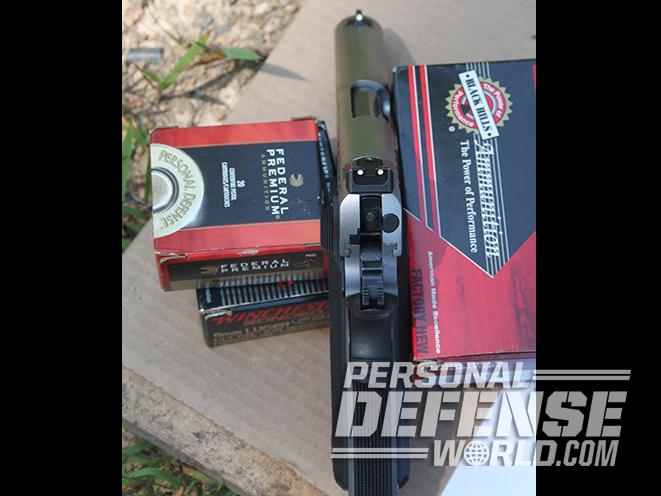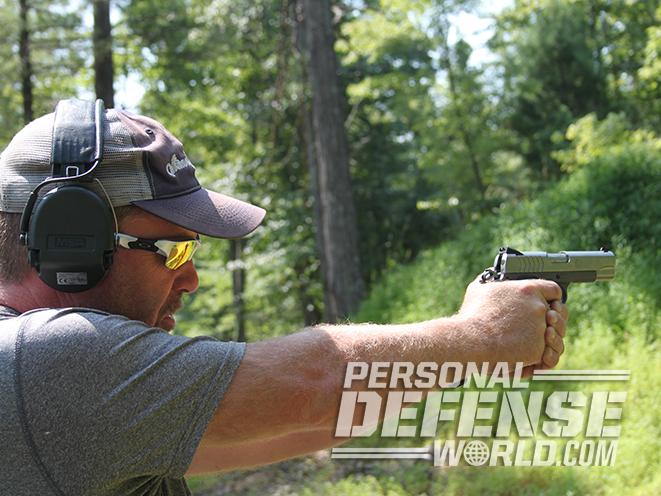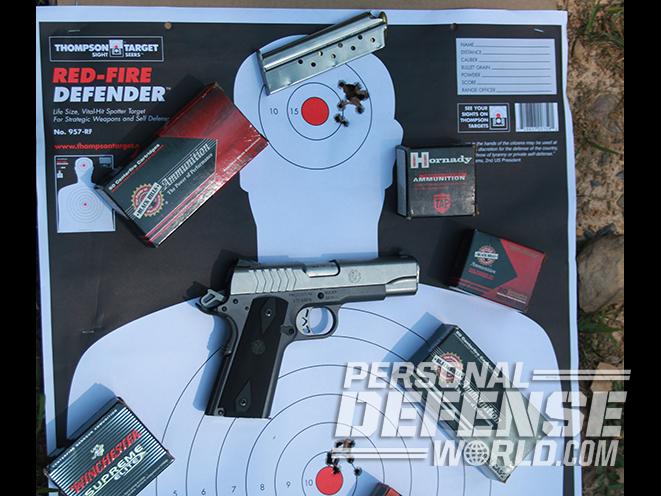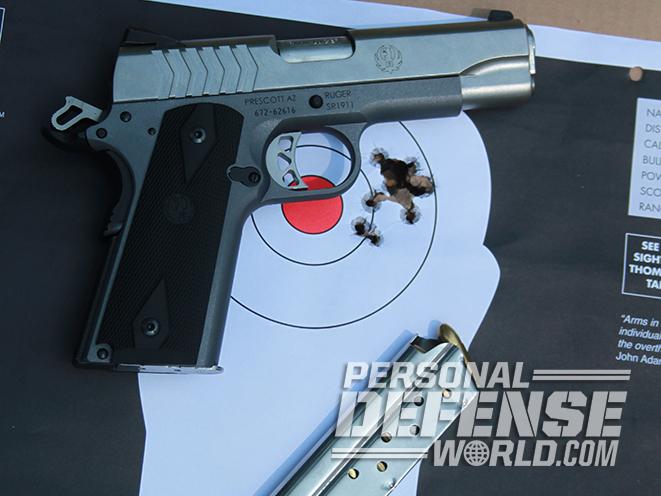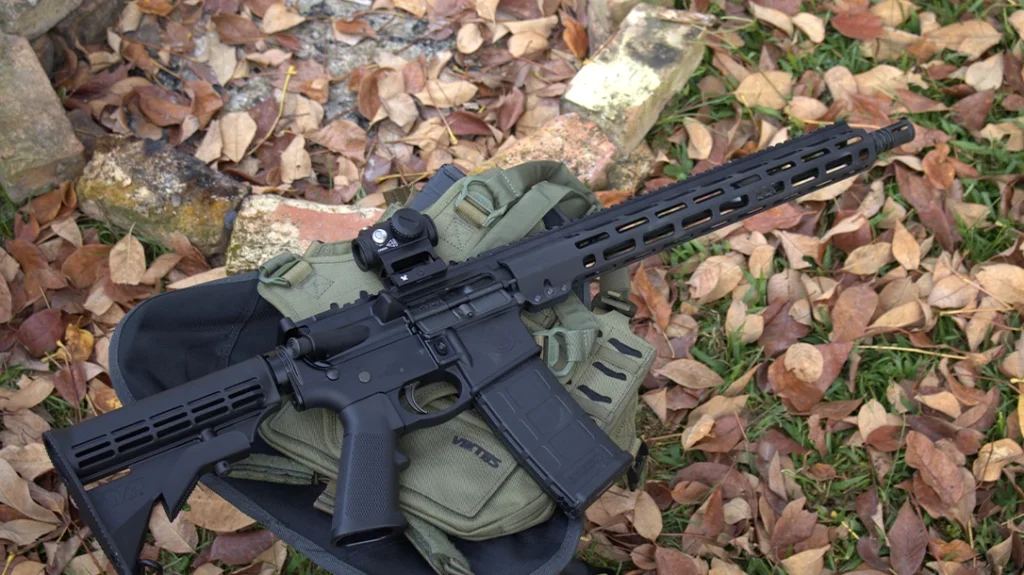Sturm, Ruger & Company is a noteworthy force in the firearms world, whether its for sporting, competition or personal defense. The newly introduced SR1911 Lightweight Commander in 9mm only reinforces this position. This gun combines the obvious popularity of the 1911 platform with Ruger’s staunch reputation for American-made quality and customer service. Of course, so much has been written about the 1911 already that any writer must tread lightly in discussing anything “new.” But I will say that Ruger’s rendition of the 1911 is refreshing. The tweaks here serve to separate the Lightweight Commander from other 1911 models on the market.
Commander Origins

The Commander-style 1911 can be considered the first 1911 designed for ease of carry compared to pure combat effectiveness. The pistol that would eventually be named the Colt Commander was Colt’s candidate for a post-World War II U.S. military trial to find a lighter replacement for the M1911A1 pistol that would be issued to officers. Issued in 1949, the requirements stipulated that the pistol had to be chambered in 9mm and could not exceed 7 inches in length or weigh more than 25 ounces. Yep, that’s right—9mm.
- RELATED STORY: 26 New Pistols & Revolvers Coming to a Holster Near You
Colt entered a modified version of its M1911A1 that was chambered for the 9mm and had an aluminum alloy frame, a short 4.25-inch barrel and a nine-round magazine. In 1951, Colt moved its service candidate into regular production for the civilian market. It was the first large aluminum-framed pistol in major production, and the first Colt pistol to originally be chambered in 9mm. The first year’s production included .45 ACP and .38 Super models as well.
Advertisement — Continue Reading Below
In 1970, Colt introduced the all-steel “Combat Commander.” To differentiate between the two models, the original aluminum-framed model was renamed the “Lightweight Commander.” Which brings us to Ruger’s take on this concept.
Ruger’s SR1911 Lightweight Commander

With this SR1911 variant, Ruger has focused its attention on creating its own version of the Lightweight Commander-style 1911. This shorter, more compact SR1911 is a response to the age of concealed carry that we live in. It’s only 7.75 inches long and 5.45 inches tall, including a 4.25-inch barrel. The gun also weighs only 29.3 ounces unloaded thanks to its aluminum frame (in lieu of steel) and stainless steel slide. In short, this Ruger represents portability, reliability and controllability—the perfect combination for a personal-defense handgun.
In fact, the SR1911 Lightweight Commander can be described as an “entry-level” 1911 in terms of price, but that about ends the analogy, as I found it performed way above this level. Its slim frame width makes it an ideal carry gun, and its single-action trigger promotes accurate shooting.
Advertisement — Continue Reading Below
The SR1911 Lightweight Commander has a full-sized grip and other features more accustomed to 1911s costing twice as much, such as a skeletonized hammer, a skeletonized trigger with an adjustable stop, Novak sights, a lowered and flared ejection port, an extended extractor, an extended thumb safety and magazine release, and a checkered backstrap.

On traditional .45 ACP 1911s, the frame serves as part of the feedway for chambering a round. Commander-style aluminum frames are subjected to a certain amount of battering with this setup, however, especially with JHP bullets. Custom gunsmiths have remedied this by affixing steel inserts to the aluminum frame. Ruger followed a similar path to address feed-ramp fatigue, but instead of steel, a titanium insert was used. The SR1911 Lightweight Commander takes this a step further by featuring an integral feed ramp as part of the barrel, eliminating the frame from the equation.
Unlike many modern 1911s that use full-length guide rods, this pistol uses a plug and spring like John Moses Browning intended. This will warm the heart of many 1911 purists who deride the use of full-length guide rods in a 1911 as a solution to a problem that does not exist—not to mention that the full-length guide rod often contributes to “over-tightness” in the design, which may cause finicky behavior in the reliability department.
Advertisement — Continue Reading Below
Along that same line, Ruger also decided to go with an original Series 70 trigger design in lieu of the Series 80 update, creating a more user-friendly trigger. The SR1911 Lightweight Commander has a titanium firing pin as well as a stronger firing pin return spring to maintain current drop test safety standards.
Aesthetically pleasing yet functional rubberized grips with texturing to match the flat mainspring housing’s stippling contrast nicely with the gray frame and low-glare stainless slide finish. The grip safety, thumb safety, Novak sights and magazine release are matte black in color to contrast nicely with the SR1911’s predominantly stainless finish. Finally, two 9-round magazines are supplied.
On The Range

I don’t want to turn this article into a 9mm versus .45 ACP debate. Let’s just say that modern personal-defense 9mm loads have come a long way from 9mm FMJs that contributed to the original negative preconceptions. To that end, I evaluated the SR1911 Lightweight Commander with loads from Black Hills, Hornady and Federal with both hollow-point and FMJ bullets ranging from 115 to 147 grains. Throughout the testing, I fired approximately 450 rounds, and I also used a .50-caliber can full of assorted steel-, aluminum- and brass-cased 9mm loads as well. For a majority of the range time, I used magazines loaded with these random rounds.
Advertisement — Continue Reading Below
My first task at the range was verifying the Lightweight Commander’s zero and then firing several magazines rapidly at various man-sized steel targets. Further testing consisted of strings of fire against steel plate racks and popper targets at 7, 15 and 25 yards.

Right out of the box, the sights were dead-on target at 25 yards. The advantages of the single-action trigger were quickly evident during the bench testing, where accuracy was the goal. The trigger was very crisp with minimal creep. Groups fired from standing or kneeling positions were impressive with bullets unerringly hitting their mark. Rapid-fire magazine dumps still found rounds clustered in the A-zone of an IPSC target. The Novak three-dot sights tracked smoothly during recoil, even when firing multiple rounds. It was refreshing to see a 1911 function right out of the box without needing a break-in period. The SR1911 Lightweight is neither too tight, which can affect reliability, or so loose it rattles. This provides for the proper blending of reliability and accuracy.
- RELATED STORY: Remastered Ruger LCP .380 – A Look at the LCP II
Considering the 1911’s primary role as a fighting/defensive handgun, I decided to further evaluate the Ruger by running it through some of the drills I’ve learned at various firearms schools. This is where the SR1911 Lightweight Commander’s natural pointability became evident. The beavertail frame settles naturally into your hand and provides a point of reference when drawing the pistol from a holster. “Condition One” cocked-and-locked carry typified by the 1911 allows a shooter to merely swipe off the safety and benefit from the light, short trigger pull.
Advertisement — Continue Reading Below
I also really appreciated the 9mm chambering in the aluminum-framed pistol over the .45 ACP. The use of aluminum versus steel shaves approximately 7 to 8 ounces off of the total weight. While this translates to more comfortable carry, the con of this is more felt recoil and muzzle flip compared to heavier steel-framed 1911s.You also shouldn’t discount the extra two rounds that this chambering provides in this pistol.
One of the unspoken benefits of choosing a 1911 is the plethora of aftermarket accessories available to support your decision in the form of holsters, magazines, grips, lasers and ammunition. I used a few of my 1911 holsters from BlackHawk, DeSantis and Galco during this review, and I didn’t experience a single issue.
Parting Shots

Advertisement — Continue Reading Below
The 1911 is a weapon that continues to attract users with its natural handling characteristics and great trigger. Is the 1911 a prime weapon for all situations or users? No. You should train with a 1911 to ensure that you and the gun function naturally and instinctively in a crisis—just like any other personal-defense weapon. But no one can argue against the 1911’s natural pointability and handling. The trigger and grip size/angle cause it to be the most accurate handgun in most arsenals. Why do you think hostage-rescue units and other special-purpose military/law enforcement teams use it? It is accurate and conducive to precise shot placement.
What is it about the 106-year-old 1911 that keeps it so adored and desired by so many shooters for personal defense and competition? Sure, more modern designs with higher capacities and newer materials have taken the market by storm, but you can’t discount the 1911. It holds its position because of several factors, not just nostalgia or other forms of emotional attachment. The business of a fighting handgun is too grim and serious to allow for emotion to sway so many.
Yes, the 1911 has been superseded as a duty weapon in our military and police ranks, but take note that elite units and personnel with a vote often revert back to the 1911. Mr. Browning certainly got it right. Ruger’s latest version in the form of the SR1911 Lightweight Commander represents the genre well.
Advertisement — Continue Reading Below
Caliber 9mm
Barrel 4.25 inches
OA Length 7.75 inches
Advertisement — Continue Reading Below
Weight 29.3 ounces (empty)
Grips Black rubberized
Sights Novak three-dot
Action SA
Finish Stainless, gray
Capacity 9+1
MSRP $979
For more information, visit ruger.com.
